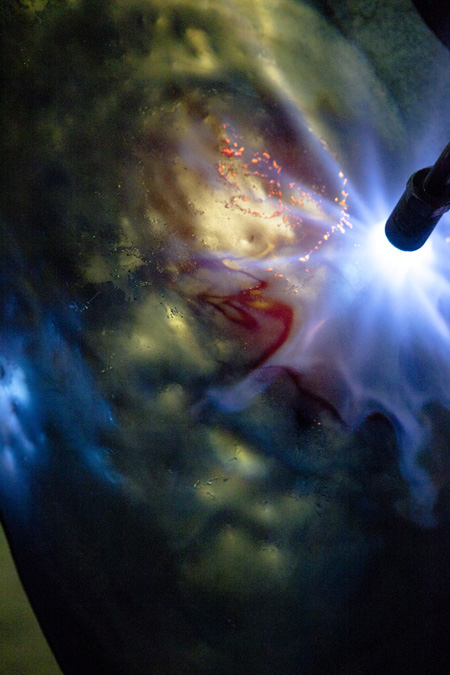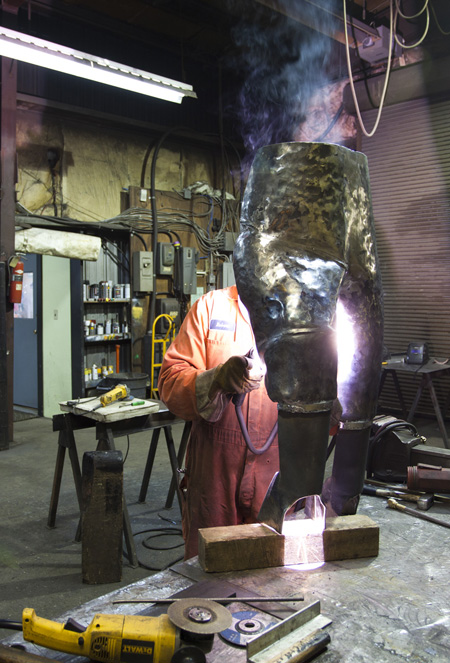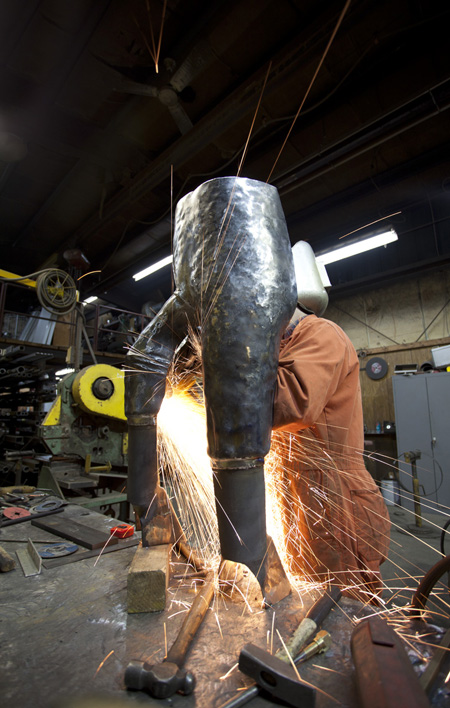By David F. Rooney
Leave it to the immensely talented and quirky Rob Buchanan to come up with something like the Breeches of Miss Conduct.
These copper-coloured steel pants mark the odd intersection of mountaineering and social convention that occurred early in the last century. At that time, gentlemen always wore ties and jackets and well-born women always skirts. Take a look at any really old photos of people camping, hiking or mountaineering at the Revelstoke Museum and you’ll see what I mean. Almost everyone is dressed up — even in places as rugged as Glacier National Park.
As the Artist’s Statement Rob created for the Breeches of Miss Conduct puts it:
“Glacier National Park is the birthplace of sport mountaineering in Canada. In the late 1890s, the Canadian Pacific Railway imported mountain guides from Switzerland to work in the posh Glacier House Hotel to serve the needs of international visitors craving mountain adventure. It was a time of daring first ascents on unnamed summits and a paradigm shift in how mountains were experienced; these jagged peaks were no longer obstacles for travel but playgrounds for alpine recreation. It was also, however, the genteel Victorian era — a time when it was socially unacceptable for a woman to wear breeches in public.
“Georgia Engelhard (named after her artist aunt, Georgia O’Keefe) set her mountaineering goals high and could not afford to let a long Victorian skirt slow her down in the mountains. By age 23, this brash, young woman always wore men’s pants while climbing and sometimes even about town, where she was occasionally mistaken for a young man. Georgia scaled an impressive number of peaks in the Canadian Rockies and Columbia Mountains. In 1931 alone, she reached 24 summits in the Selkirk Mountains in three short weeks. The Swiss guides who led her on these adventures often joked about putting rocks in her back pack just to slow her down. By leaving the skirts behind, Georgia abandoned the conventions of another era and boldly discovered the ‘beauty and exhilaration’ of mountaineering and led the way for later generations of women in the mountains.”
Naturally, that raised a lot of eyebrows even at the Banff Crag & Canyon newspaper which wrote, in its September 11, 1920, issue:
“The young women who strut about the street and dine in the hotels dressed in riding togs should be soundly spanked and sent to bed… Pants are made for men and not for women. Women are made for men and not for pants…”
The sculpture Rob designed this past winter and fabricated with Robert Maraun celebrates this set of changes and celebrate for themselves the “daring women who dropped their pants to take a peak.”




























